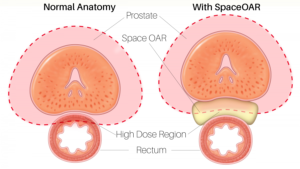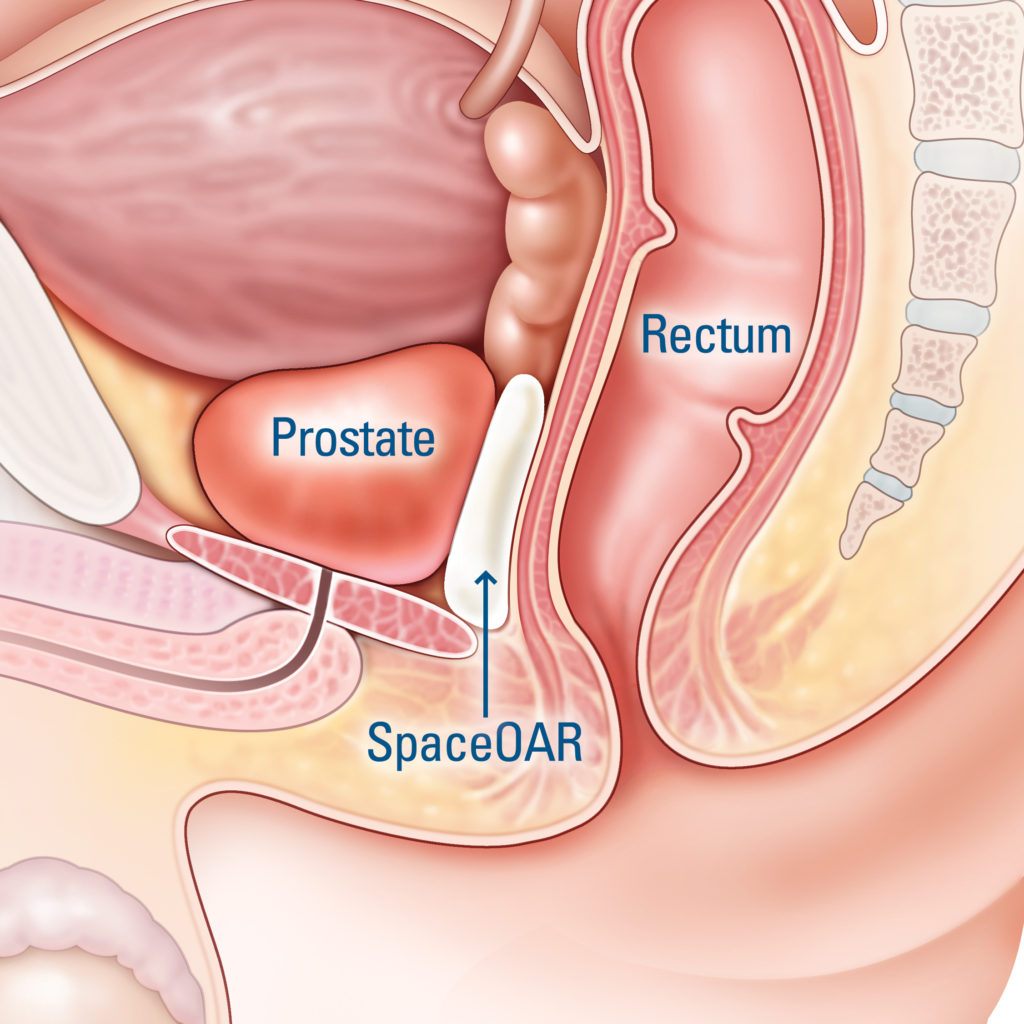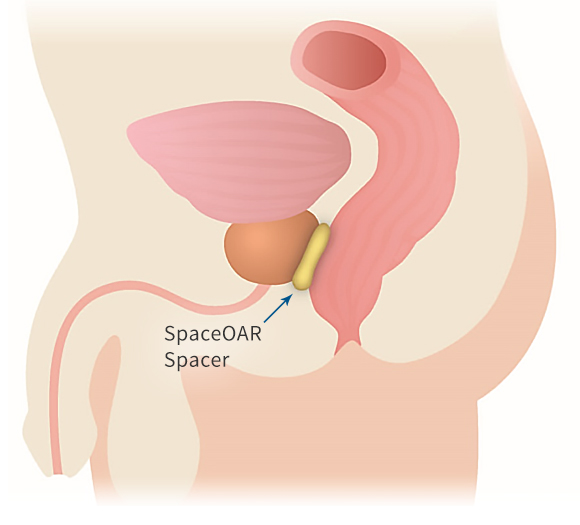What Is SpaceOAR® Hydrogel?
SpaceOAR® hydrogel is an option for men who undergo radiation treatment for prostate cancer. It acts as a spacer providing space between the rectum and the prostate, making it much less likely that the rectum is exposed to radiation. It is injected into place prior to the start of radiation treatment. Patients may be awake or asleep under general anesthesia for the procedure. SpaceOAR® hydrogel is not painful, remains stable during radiation therapy and then is gradually absorbed by the body after radiation therapy has been completed.
Proven Clinical Results
See Dr. Nasr and Dr. Hong’s published research on using Hydrogel Spacers here.
Results from a randomized clinical trial demonstrated that 3 years following radiation treatment, patients who received SpaceOAR® hydrogel prior to their radiation treatment were:
Bowel: 66% fewer SpaceOAR® hydrogel patients experienced clinically significant declines in detectable bowel quality of life (1X the Minimal Important Difference) (View Source Here) 1
Urinary: 65% fewer SpaceOAR® hydrogel patients experienced clinically significant declines (2X the Minimal Important Difference) in detectable urinary quality of life (View Source Here) 1
Sexual: SpaceOAR® hydrogel patients who had erections sufficient for intercourse at baseline were 78% more likely to retain sexual function at 3 years (View Source Here) 2
SpaceOAR® hydrogel is cleared by the FDA and more than 20,000 patients worldwide have been successfully treated.
SpaceOAR® is a registered trademark of Augmenix Inc.
How Does SpaceOAR® Hydrogel Work?
SpaceOAR® Hydrogel reduces rectal injury in men receiving prostate cancer radiation therapy (RT) by acting as a spacer – pushing the rectum away from the prostate.




